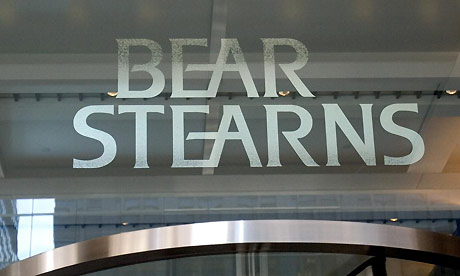 Overview
Overview
So, Bear Stearns… There’s a lot of messy economics surrounding this one, but it’s all over the news. This brief is going to break it down into what you need to know and how to explain it without a lot of economic jargon. Here is the back story: Bear Stearns is one of the world’s largest securities and brokerage firms. In June of 2007, the firm found itself in financial trouble when the hedge funds and securities it held in the subprime mortgage market had lost nearly all of their value. Over the coming months the firm posted a 61% net loss and severely damaged its credit. In March of this year, the bank was on the verge of being insolvent. On March 14, 2008, JP Morgan Chase and the Federal Reserve Bank of New York provided a loan to prevent Bear Stearns from insolvency, fearing the impact such an announcement would have on broader markets. Two days later, the Fed helped subsidize a JP Morgan merger with Bear Sterns, allowing the stock to be traded at two dollars a share. In a bid to boost investor and market confidence and gain support for their acquisition of the company, JP upped the share price to ten dollars on March 25. This rise, combined with Morgan’s assertion that they will buy newly released Stearns stock, means the company will end up purchasing 39.5% of the company at an average of $65 a share. This percentage, plus the influence of the current board, should give JP Morgan the influence it needs to gain control of the failed firm.

